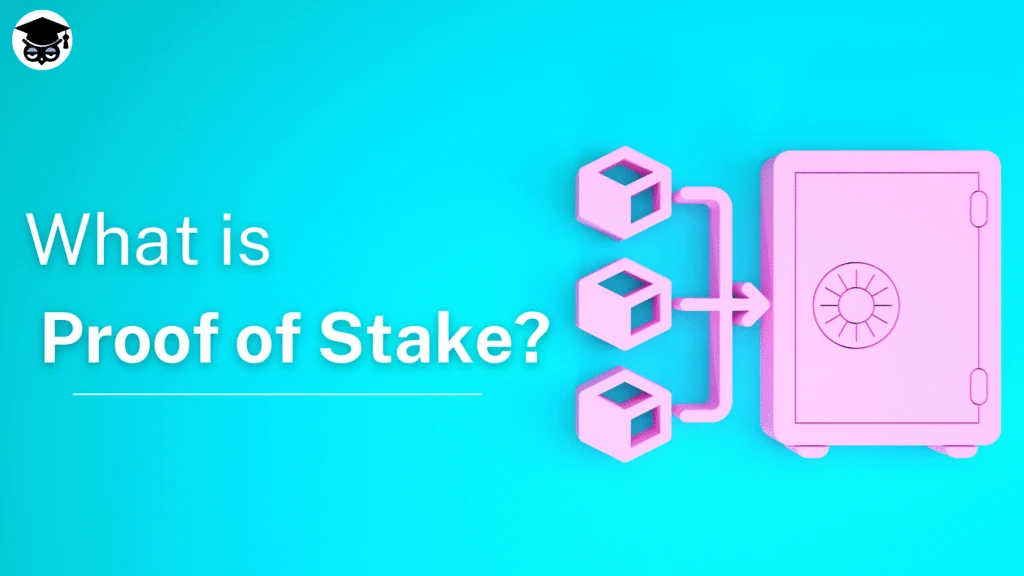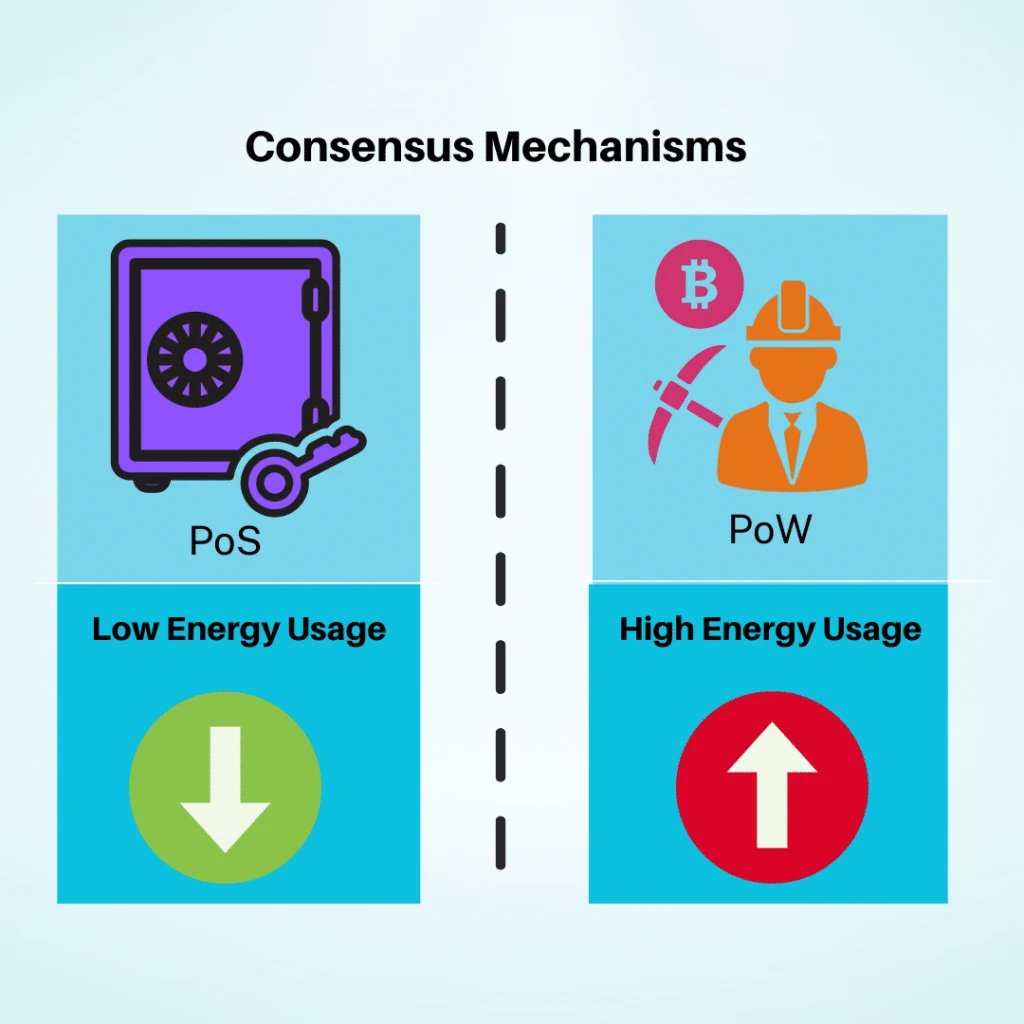What is Proof of Stake?
Proof of Stake (PoS) is a consensus mechanism used by blockchains to verify and validate transactions and blocks.
The Long Definition
PoS is a type of consensus mechanism used by certain blockchains. A consensus mechanism is a way of validating cryptocurrency transactions before they are written to the blockchain.
PoS was created as an alternative to another consensus mechanism known as Proof of Work (PoW), among several others, such as Proof of Burn (PoB), Proof of Capacity (PoC), Proof of Activity (PoA), etc.
PoS is the one that is most preferred because it’s very secure and consumes less energy. Blockchains that use PoS include Ethereum, Polkadot, Cardano, and Avalanche.

How Does Proof of Stake Work?
PoS uses participants, known as validators, to verify blocks and transactions. The network randomly selects validators to confirm a particular block. They are then rewarded by receiving a portion of transaction fees.
Anyone can become a validator. However, before you become one, the protocol needs assurance that you will not do anything that harms it. It needs to be convinced that you will only behave in a way that’s beneficial to the blockchain. This assurance is given through staking.
Staking refers to locking up your cryptocurrencies in the protocol. Normally, there is a set minimum amount of crypto you need to stake to become a validator. For example, the Ethereum blockchain requires at least 32 ETH. On the other hand, Avalanche requires a minimum of 2,000 AVAX.
Think of staking as providing collateral. If you misbehave, say by validating inaccurate data, your stake will be slashed as punishment. And once that happens, you’ll lose a portion of your funds forever. Such economic penalties imposed on misbehavior encourage validators to stay honest and true to the protocol.
Staking also influences who gets to validate the next block. Yes, validators are chosen at random. But generally, the bigger the stake the more likely it is for a validator to be picked. Why?
It is assumed that participants with huge stakes want the best for the network. They are less likely to misbehave because they have more to lose. Therefore, the protocol trusts them more to validate that blocks are accurate. Once a block has been validated it is closed and added to the blockchain.
Note that this is just a general overview. Each PoS blockchain has its unique way of implementing the consensus mechanism. It all depends on the protocol’s structure and goals.

Security
A key consideration of any consensus mechanism is security. What will it take for bad actors to gain control over the protocol and write fake transactions?
This is known as the 51% attack. In PoS, a 51% attack occurs when the attackers own 51% of the staked cryptocurrencies. Owning that big of a stake will give them the power to alter the blockchain. This could be writing and validating fake transactions.
Fortunately, it’s highly unlikely that something like that would occur. For one, it would be an extremely expensive undertaking to control 51% of staked cryptocurrencies. On the small chance it happens, the honest validators can vote to disregard the altered blockchain. This would result in the attacker losing all their crypto.
Proof of Stake vs. Proof of Work
Proof of Work (PoW) is the other big consensus mechanism. It is the original blockchain consensus mechanism that was used by Bitcoin (and still is) when the protocol launched in 2009. It was also used by Ethereum until late 2022 when the network switched to PoS.
Under PoW, participants are known as miners. They use specialized equipment to solve complex computations. In return, they are rewarded with newly mined crypto coins known as block rewards.

Benefits of Proof of Stake
PoS was developed as an alternative to PoW. Why?
PoW involves solving complex cryptographic puzzles. This requires a lot of processing power. Therefore, mining equipment is extremely energy intensive. For example, Bitcoin uses enough electricity to power a small country. And as a result, it has a very big carbon footprint.
PoS, on the other hand, uses validators. Validators don’t require specialized hardware to perform their job. A decent, everyday computer will do. Such computers don’t consume a lot of electricity. Therefore, PoS is much more energy efficient and friendlier to the environment than PoW.
Ethereum is a good example of this. According to the Ethereum Foundation, the protocol uses approximately 99.998% less electricity than it did under PoW. The carbon footprint has also declined by 99.992%.
